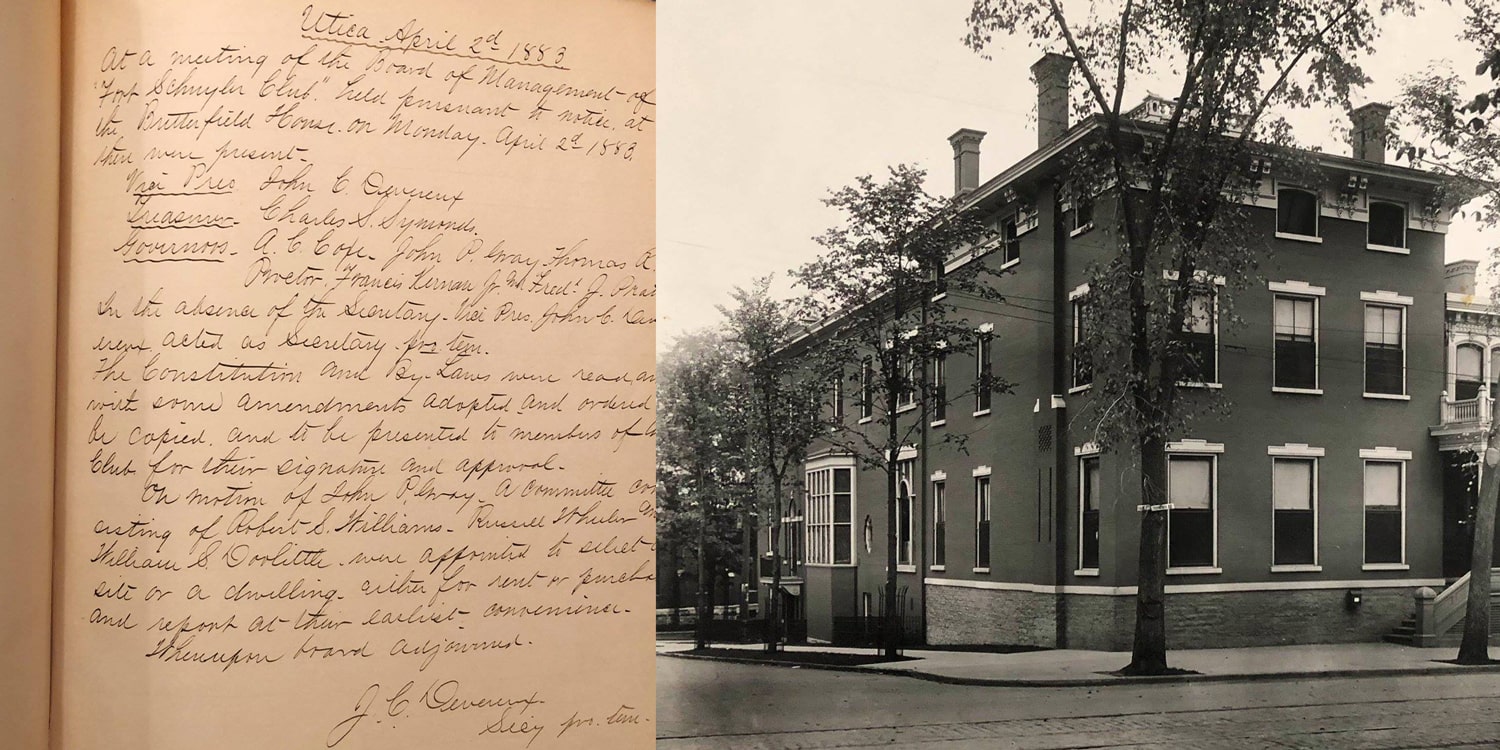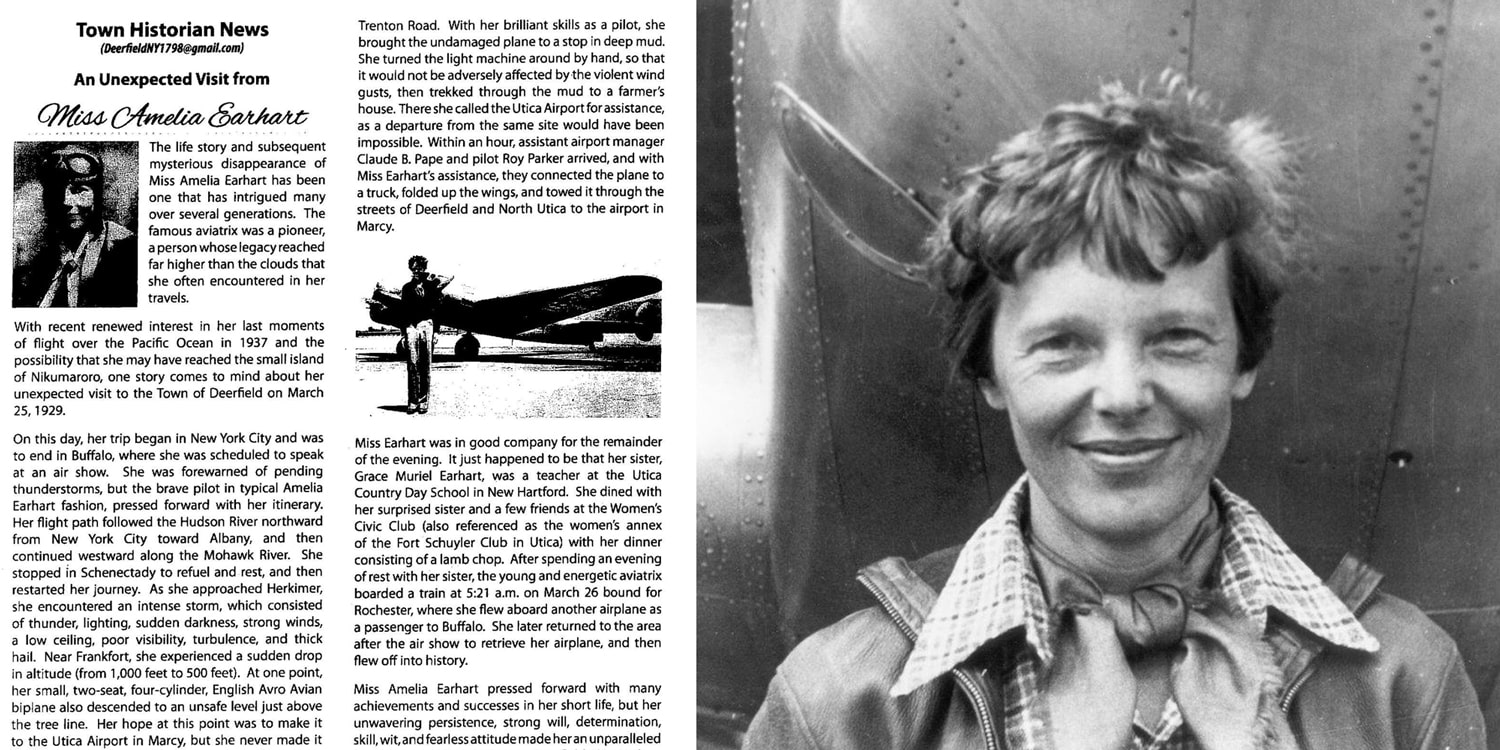Its purpose, as stated in the Articles of Incorporation, was “social intercourse among the business and professional men of Utica.” A committee was appointed to select “a site or dwelling” for a club house. Their first step was to lease the Old General Joseph Downer House. Before the first year had expired, they decided to buy off the lease and purchase the John C. Hoyt House, where the club still stands. The membership purchased the Club in 1883 for the sum of $25,000, which included gas fixtures. A committee was appointed to “complete the subscriptions.” Shortly after the purchase, the clubhouse became the first building with electrical wiring as The Electric Light and Power Company installed 150 electric lights throughout the mansion.
The members of the club hoped to add prominence to their organization by naming Mr. Horatio Seymour, former Governor of New York State and presidential candidate against General Grant as their first club President. Mr. Seymour was reluctant to accept because he felt he was unable to take an active role in either the organization or management of the club. A compromise was reached by making the office of the President purely an honorary position, with the Vice President as the executive officer. The original constitution states that “The Vice President, Secretary, Treasurer and Governors shall constitute the Board of Management.” Under these conditions, Mr. Seymour consented to be President and continued until his death three years later.
Senator Francis Kernan was chosen to fill the unexpired term and Ellis H. Roberts was elected as President in 1887. In 1889, he became Assistant Treasurer of the United States and had to resign as club President. He was succeeded by the well-known banker Publius V. Rogers, who served for eight years – the second longest term in the history of the club. The next club President was Joseph R. Swan who was followed by Thomas R. Proctor. Mr. Proctor served for 14 consecutive years, from 1899-1912 (then again from 1918-1920).
In 1903 Mr. Proctor donated to the Club a collection of letters from famous writers and poets. On display in the numerous rooms of the clubhouse are framed artifacts from such literary figures as Robert Browning, Noah Webster, James Fenimore Cooper, Rudyard Kipling, Henry Wadsworth Longfellow, and Charles Dickens.
Minutes from early meetings include very interesting and amusing subjects.
- Committees were appointed to subscribe to magazines and purchase a large Webster’s Dictionary.
- Committees were also appointed to purchase new billiard balls, an extra chandelier for the game room, and a chess table.
- The chairman of the House Committee reported that arrangements had been made to “exchange some of the high price cigars for others less costly.”
It was evident that cigar smoking was one of the more important parts of members’ lives as notes show on January 1, 1931, the inventory of cigars was $2,095.00, while food was $840.00.
The original senior membership was limited to 150 – the initiation fee was $50.00 and the dues were $40.00 a year. The dues were gradually raised to $75.00, where they remained for some time. The number of resident members was increased to 250 in 1911. In 1920 a complaint box was installed in the front hall. The custom of serving a free New year’s punch was started when it was found that there was too much champagne in the cellar, and likely to go flat. Also at this time, the Chairman of the House Committee complained that the “Prohibition Law has taken away more than $5,000.00 annually in Club revenue.” He urged members to dine at the club more often to make up the deficit. The crash of 1929 forced many members to resign for financial reasons, but many rejoined after the economic recovery.
The advent of World War II made it important to reclassify membership. On February 14, 1941, board member F. Ramsey Devereux moved that all members entering the military service be relieved from the payment of dues during the term of their service.
The cocktail lounge in the Ladies Annex was added in 1947; and in 1950 the dining rooms were air conditioned at a cost of $3,000. In 1972 the paint was removed from the exterior brick surface of the building, restoring it to its original appearance. In 1983 the club held its centennial anniversary dinner dance, which was attended by a great majority of the membership. Many of the members celebrating this wonderful occasion dressed in garb from the early years of the clubs existence.
At one time, membership was restricted to men only and women had to use an area in the back of the clubhouse and were not allowed to enter through the main entrance. In 1981, the members of the club voted to change the by-laws to allow women membership and full use of the club. Today, female members make up more than 25% of the club’s membership.
Overnight guest accommodations were once provided in the rooms on the third floor. These rooms, which were rented for $15.00 a night, were often not used, and had to be maintained with complete linen services, maid services, and night watchmen in the building. These rooms were closed in 1980 and linen service, maid service, and night watchmen were eliminated. The club installed a complete security system shortly after the night watchmen were removed.
In the Spring of 2004, The Fort Schuyler Club was added to the both the State and National Registers of Historical Places. This project was spearheaded by club President Dr. Ted Max with assistance from club historian Mrs. Virginia Kelly. Because of its National Registration, the club was able to form a foundation through the local The Community Foundation, which helps in the preservation of our historical landmark and clubhouse.


